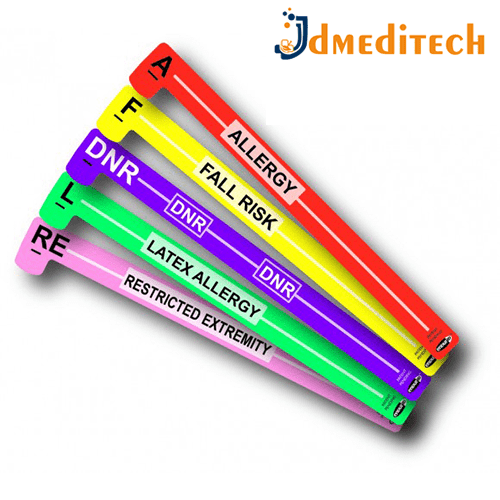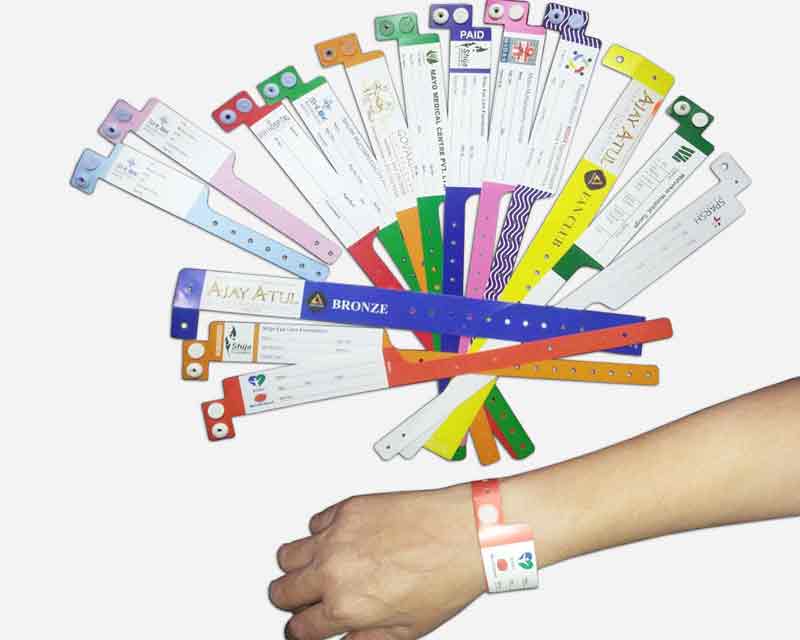The Function of Patient Identification Band in Improving Hospital Operations
The Function of Patient Identification Band in Improving Hospital Operations
Blog Article
Discovering the Numerous Kinds Of Patient Identification Band Utilized in Clinical Facilities
In the elaborate globe of medical care, the important duty of Patient Identification bands commonly goes unnoticed. These bands, differing from straightforward paper wristbands to sophisticated RFID bands, form the backbone of Patient safety protocols, making certain precision in Patient Identification.
Understanding the Value of Patient Identification Bands
While they might appear like mere devices, Patient Identification bands play a crucial role in medical centers. These bands serve as a critical tool for confirming Patient identity, preventing clinical errors associated to misidentification. Patient Identification bands likewise help in improving administrative jobs, ensuring accurate record-keeping and payment.
Conventional Paper Wristbands: Their Use and Limitations
Traditional paper wristbands have actually been a staple in Patient Identification throughout different medical facilities. While their usage is extensive, they nurture certain restrictions that may affect their efficiency in Patient administration. This area will certainly concentrate on the extent of their application and the fundamental disadvantages connected with their usage.
Paper Wristbands: Usage Range
In the realm of Patient Identification, paper wristbands have long held an important role. These bands are typically used in outpatient settings, where the Patient's keep is short-lived. Despite innovations in technology, the modest paper wristband continues to be a dependable and affordable service for Patient Identification in different medical care situations.
Limitations of Paper Wristbands
Regardless of their widespread use, paper wristbands are not without their disadvantages. In addition, paper wristbands usually lack the technological capabilities of more modern-day choices, such as barcoding or RFID chips, limiting their capability to just displaying written details. Paper wristbands can cause discomfort or skin inflammation to some patients, specifically when used for prolonged durations.
Barcoded Wristbands: Innovations in Patient Identification
While Patient Identification has actually long been an important element of healthcare, the advent of barcoded wristbands represents a significant jump forward. These bands take advantage of the simpleness of barcoding modern technology, enabling for Patient info to be swiftly checked and accessed. They boost the speed and precision of Patient Identification, minimizing the risk of clinical mistakes related to misidentification.
Radio Regularity Identification (RFID) Bands: a Step In The Direction Of Futuristic Medical Care
The development of Patient Identification bands has actually produced the appearance of Radio Frequency Identification (RFID) Bands (patient identification band). These innovative tools present key advantages for healthcare facilities, using an extra reliable and technologically advanced methods of Patient Identification. The implementation of RFID in health care is a considerable action towards a much more advanced method to Patient administration and safety and security
Comprehending RFID Bands

RFID Bands: Trick Benefits
Primarily, these bands enhance Patient safety by supplying accurate, immediate Identification, therefore minimizing clinical mistakes. RFID bands can store a huge amount of Patient data, consisting of medical history and allergies, allowing individualized treatment. In general, RFID bands stand for a significant innovation in Patient Identification modern technology, benefiting both clients and health care service providers.
Implementing RFID in Medical Care
As we click over here enter a highly innovative age, the application of RFID bands in health care comes to be increasingly important. These bands supply a smooth way to track and recognize people, ensuring their safety and boosting performance in treatment procedures. RFID bands navigate here use countless advantages over traditional Identification techniques. They can save a vast amount of information, consisting of the Patient's case history and treatment strategies, which can be easily accessed by doctor. This information helps medical professionals make informed choices pertaining to the Patient's treatment strategy. Additionally, RFID bands reduce medical errors by providing exact Patient Identification, which is crucial in preventing misdiagnosis or wrong medicine management. Hence, the application of RFID bands is a considerable action towards improving Patient safety and healthcare delivery.

Color-Coded Wristbands: Aiding in Quick and Accurate Diagnosis
In the busy atmosphere of a clinical center, color-coded wristbands have actually arised as important tools for swift and specific Identification of a person's medical problem. These wristbands, put on by individuals, bring specific shades that correspond to various clinical conditions or statuses. This system is made to offer immediate aesthetic signs to health care companies, boosting Patient safety and care top quality.
Strategies for Efficient Execution and Monitoring of Patient ID Bands
Attaining optimal use Patient Identification bands demands a well-structured method for their application and management. The initial step entails training all wellness personnel on the relevance of correctly using and checking out these bands. Medical facilities must systematize the use of ID bands throughout all departments, guaranteeing harmony and lowering inconsistencies. Routine audits ought to be performed to verify adherence to plans and to rectify any kind of disparities. Patient education is likewise vital; patients must recognize the purpose of the bands and the demand for their continuous wear. patient identification band. It's important to have a backup strategy in place, such as address barcode scanning or biometrics, to guarantee that Patient Identification is never ever jeopardized.
Final thought
Patient Identification bands are critical in medical facilities to make certain safety and precision. Standard paper, barcoded, RFID, and color-coded wristbands each hold special benefits, varying from cost-effectiveness to innovative information storage space and immediate clinical alerts. Efficient implementation and management of these bands can dramatically lower clinical errors, enhance efficiency, and improve overall Patient treatment. Therefore, understanding and using these Identification tools is critical for keeping high standards in health care.
These bands, differing from easy paper wristbands to sophisticated RFID bands, form the foundation of Patient safety methods, making certain accuracy in Patient Identification.The advancement of Patient Identification bands has actually brought about the introduction of Radio Regularity Identification (RFID) Bands. On the whole, RFID bands represent a significant advancement in Patient Identification technology, profiting both individuals and medical care carriers.
RFID bands decrease medical errors by offering accurate Patient Identification, which is vital in avoiding misdiagnosis or incorrect medication administration. Patient education is additionally critical; individuals should comprehend the purpose of the bands and the demand for their constant wear.
Report this page